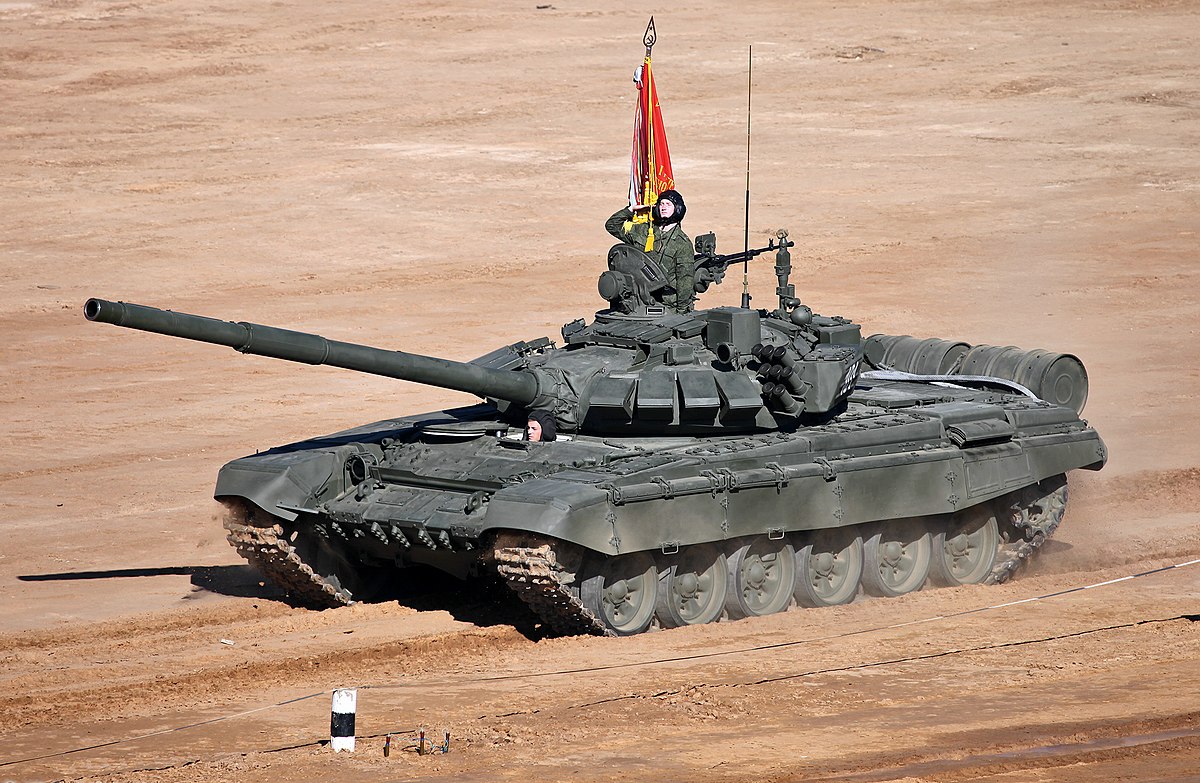
Main battle tank T-72B3
Main battle tanks T-72B3 model 2016 (T-72B3M) during training for the May parade in Moscow. Noteworthy are the new armor elements on the side covers of the hull and chassis, as well as strip screens protecting the control compartment.
On May 9, during the Victory Parade in Moscow, the latest modification of the T-72B3 MBT was officially presented for the first time. Although they are significantly less effective than the revolutionary T-14s of the Armata family, vehicles of this type are an example of consistency in the process of modernizing the weapons of the Armed Forces of the Russian Federation. From year to year, the T-72B3 - the mass modernization of the T-72B tanks - become the basis of the armored forces of the Russian Army.
The T-72B (Object 184) entered service on October 27, 1984. At the time of entry into service, it was the most advanced of the "seventy-two" varieties that were mass-produced in the Soviet Union. The strength of this machine was the armor protection of the frontal parts of the turret, superior to that of the T-64 family and similar to the latest T-80 variants. During production, the combined passive armor was reinforced with a reactive shield (this version is sometimes referred to unofficially as the T-72BV). The use of 4S20 "Contact-1" cartridges significantly increased the chances of the T-72B in confronting guns with a cumulative warhead. In 1988, the rocket shield was replaced with the new 4S22 "Kontakt-5", which also limited the penetration ability of sub-caliber projectiles hitting the tank. Vehicles with such armor were unofficially called T-72BM, although in military documents they are referred to as T-72B of the 1989 model.
Modernization of the T-72B in Russia
The designers of the T-72B sought not only to improve the armor coating, but also to increase firepower. The tank was armed with the 2A46M cannon, by changing the design of the retractors, which was more accurate than the previous 2A26M / 2A46. A bayonet connection between the barrel and the breech chamber was also introduced, which made it possible to replace the barrel without lifting the turret. The gun has also been adapted to fire new generation sub-caliber ammunition, as well as guided missiles of the 9K119 9M120 system. The 2E28M guidance and stabilization system was also replaced by 2E42-2 with electro-hydraulic lift drives and electromechanical turret traverse drives. The new system not only had more or less twice the accuracy of the stabilization parameters, but also provided a third faster turret rotation.
The changes described above led to an increase in combat weight from 41,5 tons (T-72A) to 44,5 tons. In order for the latest version of the “seventy-two” to not be inferior to the old machines in terms of traction, it was decided to increase the engine power. The previously used diesel unit W-780-574 with a capacity of 46 hp. (6 kW) was replaced by the W-84-1 engine, the power of which was increased to 618 kW / 840 hp.
Despite the improvements, the weak point of the T-72B, which had a negative impact on firepower, was the solutions for observation, aiming and fire control devices. It was not decided to use one of the modern, but also expensive systems, such as 1A33 (installed on the T-64B and T-80B) or 1A45 (T-80U / UD). Instead, the T-72B was fitted with the much simpler 1A40-1 system. It included the previously used TPD-K1 laser rangefinder sight, to which, among other things, an electronic (analogue) ballistic computer and an additional eyepiece with a display were added. Unlike the previous "seventy-two", in which the gunners themselves had to evaluate the correction for movement when firing at moving targets, the 1A40-1 system worked out the necessary corrections. After completion of the calculations, the aforementioned eyepiece displayed the advance value in thousandths. The gunner's task was then to point the appropriate secondary target at the target and fire.
On the left side and slightly above the gunner's main sight, a 1K13 day / night sighting device was placed. It was part of the 9K120 guided weapon system and was used to guide 9M119 missiles, as well as to fire conventional ammunition from a cannon at night. The night track of the device was based on a residual light amplifier, so it could be used both in passive (range up to about 800 m) and in active mode (up to about 1200 m), with additional illumination of the area with an L-4A reflector with an infrared filter. If necessary, 1K13 served as an emergency sight, although its capabilities were limited to a simple reticle.
Even in the realities of the mid-80s, the 1A40-1 system cannot be judged otherwise than as a rather primitive one. Modern fire control systems, similar to those used on the T-80B and Leopard-2, automatically entered settings calculated by an analog ballistic computer into the drives of the weapon guidance system. The gunners of these tanks did not have to manually adjust the position of the target mark, which greatly accelerated the aiming process and reduced the risk of making a mistake. 1A40-1 was inferior to even less advanced systems developed as modifications of old solutions and deployed on the M60A3 and the upgraded Chieftains. Also, the equipment of the commander's place - a partially rotating turret with a day-night active device TKN-3 - did not provide the same search and target indication capabilities as panoramic sights or the PNK-4 command guidance system installed on the T-80U. Moreover, the optical equipment of the T-80B was becoming more and more outdated compared to Western vehicles that entered service in the 72s and had first-generation thermal imaging devices.
